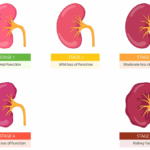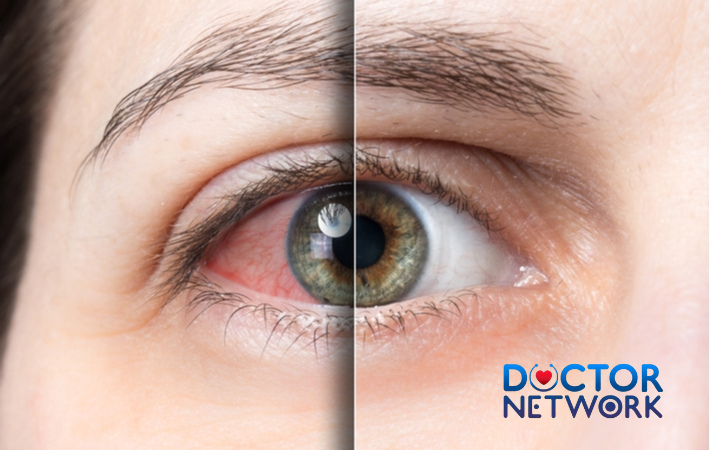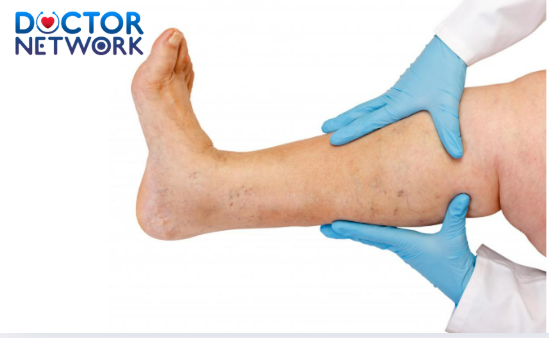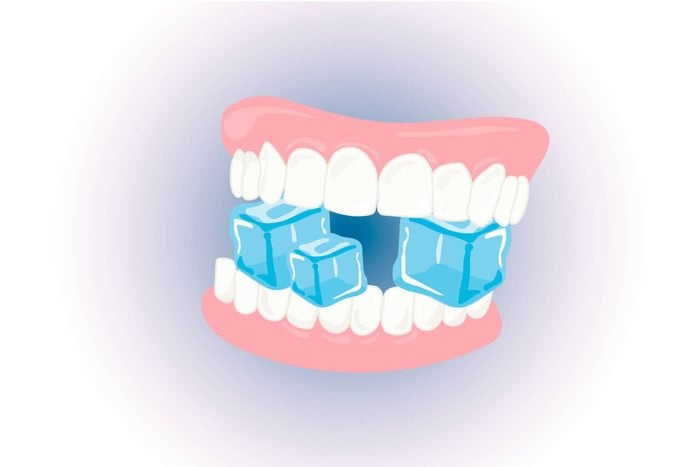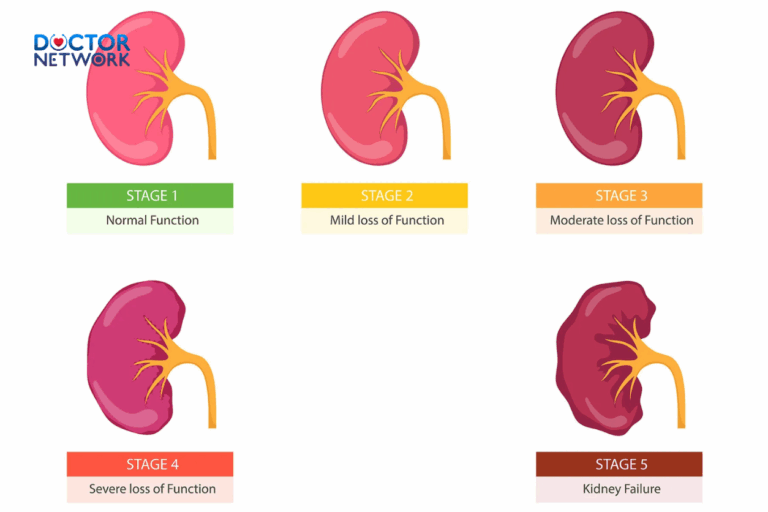Benadryl (diphenhydramine) typically remains in your system for 24-48 hours after your last dose, though the sedating effects usually wear off within 4-6 hours. This first-generation antihistamine undergoes complex metabolic processes that determine both how long you’ll feel its effects and how long drug metabolites remain detectable in your body.
How Long Does Benadryl Stay in Your System – Understanding Benadryl’s duration matters significantly for medication safety, avoiding dangerous drug interactions, preventing accidental overdose, and preparing for potential drug screenings. Unlike newer antihistamines, diphenhydramine crosses the blood-brain barrier readily, causing pronounced central nervous system effects that can impair cognitive function and motor skills long after you take it.
This comprehensive guide explores the pharmacokinetics of Benadryl elimination, factors that influence duration, detection windows for various drug tests, risks associated with prolonged use, and safer alternatives. We’ll examine the crucial difference between how long effects last versus how long the medication remains detectable, empowering you to make informed decisions about antihistamine use.
 How Long Does Benadryl Stay in Your System: Complete Medical Guide
How Long Does Benadryl Stay in Your System: Complete Medical Guide
The Science of Duration: Half-Life and Elimination
The elimination half-life represents the time required for your body to reduce the drug concentration by 50%, serving as the primary determinant of how long Benadryl persists in your system. Clinical studies report varying half-life ranges for diphenhydramine, typically spanning 2.4-9.3 hours depending on individual factors, with healthy young adults averaging approximately 4.3 hours.
Pharmacokinetic principles dictate that complete drug elimination requires 4-5 half-lives to clear roughly 97% of the substance from your bloodstream. Based on Benadryl’s median half-life, most individuals can expect total elimination within 24-48 hours, though some sources suggest waiting up to 60 hours to avoid drug accumulation after repeated dosing.
The critical distinction between pharmacokinetics and pharmacodynamics often confuses patients: while drowsiness and antihistamine effects typically resolve within hours, drug metabolites continue circulating and remain detectable much longer. This explains why you might feel alert again while drug tests could still detect Benadryl presence days later.
Benadryl Half-Life by Age Group
| Age Group | Average Half-Life | Elimination Time |
|---|---|---|
| Children (2-11 years) | 5.4 hours | 22-27 hours |
| Young Adults (18-30) | 4.3 hours | 17-22 hours |
| Adults (31-65) | 9.2 hours | 37-46 hours |
| Seniors (65+) | 13.5 hours | 54-68 hours |
How Benadryl Moves Through the Body (Pharmacokinetics)
Absorption begins rapidly following oral administration, with initial effects manifesting within 15 minutes as diphenhydramine enters your bloodstream through gastrointestinal absorption. Peak plasma concentrations occur 2-4 hours post-dose, coinciding with maximum therapeutic and sedative effects.
Distribution throughout your body occurs via systemic circulation, with diphenhydramine readily crossing the blood-brain barrier due to its lipophilic properties. This characteristic enables the medication’s effectiveness against allergic symptoms while simultaneously causing central nervous system depression, including drowsiness, confusion, and impaired coordination.
Metabolism primarily occurs in the liver through cytochrome P450 enzymes, which process 50-60% of the ingested diphenhydramine dose. Hepatic metabolism transforms the parent compound into various metabolites over 24-48 hours, with liver function significantly influencing elimination speed. The remaining 40-50% undergoes renal filtration and excretion through the kidneys, making kidney function equally crucial for drug clearance.
Factors Influencing How Long Benadryl Stays in Your System
Dosage directly correlates with elimination time, as higher doses require proportionally longer clearance periods. Doubling your Benadryl dose typically extends elimination by one additional half-life, potentially keeping the medication active in your system for an extra 4-13 hours depending on your individual metabolism.
Frequency of use creates cumulative effects that significantly prolong system retention, particularly when taking doses every 4-6 hours as commonly recommended for severe allergic reactions. Regular users may experience drug accumulation, where new doses add to existing medication levels before complete elimination occurs.
Age represents one of the most significant variables affecting Benadryl duration, with metabolism and elimination slowing considerably in older adults. Pediatric patients typically clear diphenhydramine faster than adults, while seniors may require twice as long for complete elimination due to decreased liver and kidney function.
Factors That Slow Benadryl Elimination
- Liver Disease: Hepatitis, cirrhosis, or fatty liver disease
- Kidney Dysfunction: Reduced glomerular filtration rate
- Advanced Age: Decreased metabolic enzyme activity
- Drug Interactions: Cytochrome P450 inhibitors
- Dehydration: Reduced renal blood flow
- Heart Failure: Compromised circulation
- High Body Fat: Increased drug distribution volume
Drug and Substance Interactions Affecting Duration
Alcohol consumption significantly impairs diphenhydramine metabolism while intensifying sedative effects, creating dangerous synergistic interactions that can lead to respiratory depression, extreme drowsiness, and impaired judgment. The combination slows liver processing and extends both therapeutic and adverse effects.
Central nervous system depressants including benzodiazepines, opioids, barbiturates, and antipsychotics compound Benadryl’s sedating properties while potentially extending elimination time. These combinations increase risks of profound sedation, respiratory compromise, and cardiovascular depression requiring emergency medical intervention.
Monoamine oxidase inhibitors (MAOIs) represent particularly dangerous interactions, potentially causing hypertensive crisis while significantly prolonging diphenhydramine system retention. Concurrent use requires immediate medical supervision and may necessitate dose adjustments or alternative medications.
Other medications affecting cytochrome P450 enzymes can either accelerate or inhibit Benadryl metabolism. Enzyme inducers may shorten duration, while inhibitors extend elimination time and increase toxicity risks.
Benadryl and Drug Tests
Standard employment or legal drug screenings typically exclude diphenhydramine testing, focusing instead on controlled substances like THC, cocaine, amphetamines, and opiates. However, Benadryl can trigger false positive results for several tested substances, creating potential complications for individuals undergoing screening.
False positive occurrences happen more frequently with diphenhydramine compared to second-generation antihistamines, potentially indicating presence of opiates, methadone, phencyclidine (PCP), or benzodiazepines. The exact chemical mechanism behind these cross-reactions remains unclear, but structural similarities likely contribute to testing interference.
Detection Windows for Benadryl
| Test Type | Detection Window | Peak Detection |
|---|---|---|
| Urine Tests | 1-4 days | 2-3 days |
| Blood Tests | 1-3 days | 2-4 hours |
| Saliva Tests | 1-4 days | 2-24 hours |
| Hair Follicle | Up to 7 weeks | 1-2 weeks |
When facing drug testing, inform the examiner about any antihistamine use to prevent false positive complications. Documentation from healthcare providers or pharmacy records can help verify legitimate medication use if questions arise.
Duration of Effects vs. Duration in System
Therapeutic effects typically persist 4-6 hours following standard dosing, with antihistamine activity potentially lasting up to 8 hours for allergy symptom relief. Extended-release formulations may provide 12-hour symptom control through modified drug release mechanisms.
Sedative effects usually begin within 15-30 minutes, reaching peak intensity 1-3 hours post-dose. Drowsiness commonly persists 4-6 hours but may extend to 8 hours or carry over to the following day, particularly with evening dosing or in sensitive individuals.
The crucial distinction lies in understanding that feeling alert doesn’t indicate complete drug elimination. While noticeable effects subside within hours, drug metabolites remain detectable much longer, continuing to influence drug test results and potential interactions with newly administered medications.
Risks, Side Effects, Tolerance, and Dependence
Common adverse effects include drowsiness, dizziness, dry mouth, blurred vision, constipation, and urinary retention due to diphenhydramine’s anticholinergic properties. These effects typically correlate with therapeutic duration but may persist longer in elderly patients or those with compromised metabolism.
Serious side effects requiring immediate medical attention include cardiac palpitations, severe confusion, uncontrolled muscle movements, breathing difficulties, and inability to urinate. These symptoms may indicate overdose or dangerous drug interactions necessitating emergency intervention.
Long-Term Risks of Prolonged Benadryl Use
- Cognitive Impairment: Memory problems, confusion, difficulty concentrating
- Increased Fall Risk: Particularly dangerous in elderly populations
- Tolerance Development: Requiring higher doses for equivalent effects
- Physical Dependence: Withdrawal symptoms upon discontinuation
- Dementia Risk: Associated with chronic anticholinergic medication use
- Cardiovascular Effects: Irregular heartbeat, blood pressure changes
Overdose symptoms include extreme sedation, hallucinations, seizures, cardiac arrhythmias, and potentially fatal respiratory depression. Overdose significantly prolongs elimination time while requiring intensive medical management including supportive care, activated charcoal, and sometimes mechanical ventilation.
Withdrawal from chronic Benadryl use can produce severe symptoms lasting 7-14 days, including rebound insomnia, anxiety, nausea, tremors, and in extreme cases, seizures. Medical supervision during discontinuation helps manage withdrawal safely and prevents complications.
Safe Use and Alternatives
Recommended adult dosing ranges from 25-50 mg every 4-6 hours, with maximum daily limits of 300 mg to prevent toxicity. Pediatric dosing requires careful calculation based on age and weight, with specific maximum daily allowances varying by age group to ensure safety.
Duration of continuous use should not exceed two weeks due to tolerance development and dependence risks. Chronic allergic conditions benefit more from second-generation antihistamines that provide effective symptom control without significant central nervous system effects.
Safer Second-Generation Antihistamine Alternatives
- Cetirizine (Zyrtec): 24-hour relief, minimal sedation
- Loratadine (Claritin): Non-drowsy, once-daily dosing
- Fexofenadine (Allegra): No sedation, effective for seasonal allergies
- Levocetirizine (Xyzal): Enhanced potency, reduced side effects
- Desloratadine (Clarinex): Long-acting, minimal drug interactions
These alternatives offer superior safety profiles because they don’t readily cross the blood-brain barrier, providing effective antihistamine activity without significant sedation or cognitive impairment.
Hydration supports natural elimination processes by maintaining optimal kidney function and urine production. Light exercise and nutritious meals may enhance metabolism, though these effects remain modest compared to individual physiological factors.
When to Seek Medical Help
Consult healthcare providers before starting Benadryl, especially with pre-existing medical conditions, during pregnancy or breastfeeding, or when taking other medications. Professional guidance helps identify potential interactions and determine appropriate dosing strategies.
Addiction treatment becomes necessary when Benadryl use escalates beyond therapeutic needs or when withdrawal symptoms occur upon discontinuation. Treatment options include medical detoxification, residential programs, outpatient counseling, and continuing care support.
Emergency medical attention is required for suspected overdose, severe allergic reactions, breathing difficulties, or signs of anticholinergic toxicity. Don’t hesitate to call 911 or contact Poison Control at 1-800-222-1222 for overdose emergencies.
Conclusion
Benadryl elimination from your system typically requires 24-48 hours, though individual factors including age, health status, dosage, and drug interactions significantly influence this timeline. While therapeutic effects subside within 4-6 hours, drug metabolites persist much longer and can interfere with drug testing or interact with newly administered medications.
Safe Benadryl use requires understanding proper dosing, recognizing side effects, avoiding dangerous drug combinations, and consulting healthcare providers for personalized guidance. The medication’s sedating properties and potential for dependence make it less suitable for chronic use compared to newer antihistamine alternatives.
For optimal safety and effectiveness, consider second-generation antihistamines for long-term allergy management while reserving Benadryl for short-term situations requiring its unique properties. Always consult medical professionals when questions arise about medication duration, interactions, or concerning symptoms that may indicate complications requiring immediate attention.
Here are the 5 most frequently asked questions about the topic “How long does Benadryl stay in your system?” along with detailed answers:
1. What is Benadryl and what is it used for?
Benadryl is an antihistamine medication whose active ingredient is diphenhydramine. It is commonly used to relieve allergy symptoms such as hives, itching, watery eyes, sneezing, as well as to prevent motion sickness, treat cough, reduce nausea, and act as a mild sedative or sleep aid.
2. How long does it take for Benadryl to start working?
Benadryl usually starts working within 30 minutes after taking it. It reaches its peak concentration in the blood between 1 to 4 hours, typically around 2 hours. The effects generally last for about 4 to 6 hours.
3. How long does Benadryl stay in your system?
The length of time Benadryl stays in your system depends on factors such as age, metabolism, liver and kidney function, and dosage. The half-life of diphenhydramine in adults averages between 7 to 12 hours, about 4 to 7 hours in children, and can be up to 18 hours in elderly individuals. It typically takes 24 to 48 hours for the drug to be fully eliminated from the body. However, Benadryl can be detected in urine for 2 to 4 days after use, in blood for 1 to 2 days, in saliva for 3 to 4 days, and in hair for up to 7 weeks.
4. What factors affect how long Benadryl stays in your system?
Age: Older adults eliminate the drug more slowly than younger people and children.
Dosage and frequency: Higher doses or repeated use increase drug levels and prolong elimination time.
Liver and kidney function: Since the liver metabolizes and kidneys excrete the drug, impaired function can lengthen its presence in the body.
Drug and food interactions: Some medications and alcohol can increase sedative effects or affect diphenhydramine metabolism, extending how long it stays in your system.
5. What side effects does Benadryl have and what precautions should be taken?
Benadryl can cause drowsiness, dizziness, dry mouth, blurred vision, constipation, and stomach upset. It may increase sedation when taken with alcohol or other central nervous system depressants such as sedatives, sleeping pills, or anti-anxiety drugs. Caution is advised for people with myasthenia gravis, epilepsy, infants, and those allergic to diphenhydramine or other antihistamines.
The key concept to understand is “half-life.” The half-life of a drug is the time it takes for the concentration of the drug in your body to be reduced by 50%. It generally takes about 4-5 half-lives for a drug to be almost completely eliminated from the system (over 94%).
Active Ingredient: Benadryl’s active ingredient is diphenhydramine.
General Information:
Diphenhydramine’s half-life can vary significantly among individuals, but it typically ranges from 2.4 to 9.3 hours in healthy adults. The average half-life is often cited around 4-6 hours.
Elimination Time: Based on this, it can take anywhere from approximately 12 hours to 2 days (specifically, around 46.5 hours if using the longest half-life of 9.3 hours x 5) for diphenhydramine to be substantially cleared from an adult’s system.
Duration of Effects: However, the noticeable effects of Benadryl (like drowsiness or allergy relief) usually last for about 4 to 6 hours. This is shorter than the total time it takes for the drug to be fully eliminated.
Factors Influencing How Long Benadryl Stays in Your System:
Age: Elderly individuals may metabolize diphenhydramine more slowly, leading to a longer half-life and duration in the system.
Liver Function: Diphenhydramine is primarily metabolized by the liver. Impaired liver function can significantly prolong its half-life.
Kidney Function: While primarily metabolized by the liver, the metabolites are excreted by the kidneys. Impaired kidney function can affect the elimination of these metabolites.
Dosage: Higher doses will take longer to clear.
Frequency of Use: Regular use can lead to some accumulation, though diphenhydramine is not typically associated with significant long-term accumulation if taken as directed.
Individual Metabolism: Genetic differences in metabolic enzymes (like CYP2D6) can affect how quickly an individual processes the drug.
Scientific Evidence and Sources:
StatPearls (National Center for Biotechnology Information – NCBI):
Title: Diphenhydramine
Authors: Sicari V, Zabbo CP.
Source: StatPearls Publishing; 2023 Jan-.
Key Information: “The half-life of diphenhydramine is approximately 2.4 to 9.3 hours in healthy adults. Peak plasma concentration is achieved 2 to 3 hours following oral administration. The duration of action is typically 4 to 6 hours. Diphenhydramine is primarily metabolized in the liver by cytochrome P450, specifically CYP2D6, and is excreted mainly in the urine as metabolites.”
Link: https://www.ncbi.nlm.nih.gov/books/NBK526010/
Drugs.com (Professional Drug Information):
Title: Diphenhydramine Professional Information
Author: Drugs.com (compiles information from FDA-approved labeling, clinical studies, and other authoritative sources).
Key Information: “Half-life is variable, ranging from 2.4 to 9.3 hours. Generally, after about 5 half-lives, most of a drug is eliminated. For diphenhydramine, this could be anywhere from approximately 12 hours to 2 days (e.g., 9.3 hours x 5 = 46.5 hours).” It also notes extensive metabolism in the liver.
Link: https://www.drugs.com/pro/diphenhydramine.html (This is the professional monograph which is more detailed than the consumer version).
American Academy of Allergy, Asthma & Immunology (AAAAI):
While not a primary research paper, organizations like AAAAI provide reliable information based on established medical knowledge.
Title: Antihistamines
Author: AAAAI (reviewed by medical professionals)
Key Information: They typically discuss the duration of action of first-generation antihistamines like diphenhydramine as being 4-6 hours, necessitating multiple daily doses for continuous effect. They also highlight side effects related to its presence in the system, such as sedation.
Link (General Antihistamine Info): https://www.aaaai.org/tools-for-the-public/conditions-library/allergies/antihistamines-in-detail (This link is for general antihistamine information; specific half-life data is usually found in pharmacokinetic studies or drug monographs like the ones above).
Clinical Pharmacokinetics Study (Example of older foundational research):
Title: Pharmacokinetics of diphenhydramine in man.
Authors: Albert KS, Hallmark MR, Sakmar E, Weidler DJ, Wagner JG.
Source: Journal of Pharmacokinetics and Biopharmaceutics, 1975 Jun;3(3):159-70.
Key Information: This is an older but foundational study that helped establish the pharmacokinetic profile of diphenhydramine, including its half-life. Such studies underpin the information found in modern drug databases. (Abstract often available, full text might require subscription).
Link (PubMed Abstract): https://pubmed.ncbi.nlm.nih.gov/1150764/
Abstract Excerpt: “The mean biologic half-life of diphenhydramine averaged 4.3 +/- 0.5 (S.D.) hr…” (Note: this study showed a narrower range, newer comprehensive reviews show wider variability).
Summary for Detection:
Urine: Diphenhydramine and its metabolites can be detectable in urine for 2-4 days, sometimes longer in individuals with slower metabolism or after higher/prolonged doses.
Blood: Detectable in blood for up to 24-48 hours, closely aligning with the 5 half-lives rule.
Saliva: Shorter detection window, often similar to blood or slightly less.
Hair: Like many drugs, it can be detected in hair follicles for up to 90 days or longer, but hair testing for Benadryl is uncommon unless in specific forensic contexts.
Kiểm Duyệt Nội Dung
More than 10 years of marketing communications experience in the medical and health field.
Successfully deployed marketing communication activities, content development and social networking channels for hospital partners, clinics, doctors and medical professionals across the country.
More than 6 years of experience in organizing and producing leading prestigious medical programs in Vietnam, in collaboration with Ho Chi Minh City Television (HTV). Typical programs include Nhật Ký Blouse Trắng, Bác Sĩ Nói Gì, Alo Bác Sĩ Nghe, Nhật Ký Hạnh Phúc, Vui Khỏe Cùng Con, Bác Sỹ Mẹ, v.v.
Comprehensive cooperation with hundreds of hospitals and clinics, thousands of doctors and medical experts to join hands in building a medical content and service platform on the Doctor Network application.











